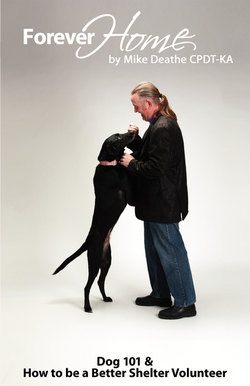Читать книгу Forever Home... - Mike Deathe CPDT-KA - Страница 4
На сайте Литреса книга снята с продажи.
The Future is the Past…
ОглавлениеLet’s say you had a time machine, traveled back 20 to 30 years and decided to stop in at the local animal shelter to look at the dogs and cats. It would be very different than the shelters you see today. This difference is in the make-up of the population of the shelter. We have done such a good job with one problem that we have inadvertently created another one. Years ago it was determined (correctly) that overpopulation was the main problem in shelters. Very few dogs were getting “fixed” and the population of puppies was exploding. When you walked into a shelter back then, there were usually more puppies than dogs of any other age. Even though puppies are cuter and more adoptable, there were just too many of the furry little critters to find homes for all of them. The solution that took shape was with the idea of spay and neuter programs; where as a rule, every shelter dog was fixed. With lots of hard work and education about the importance and benefits of “fixing” animals, we witnessed not only a decrease in the number of puppies but also the creation of low-cost spay and neuter programs all over the country…we made a difference.
Today the number of puppies in shelters has decreased dramatically, which is great, but now we find ourselves in a world where the majority of shelter dogs are of the juvenile/adolescent variety. Unfortunately, these dogs are typically not as cute, needy, or emotionally pleasing as their puppy counterparts, which makes them much harder to adopt. On top of all of this, many shelter dogs now come to the shelter by owner surrender or from being picked up by animal control because they got out and nobody went looking for them. Ask yourself two simple questions…
1 Why would someone get rid of a perfectly good dog?
2 Why are the majority of these dogs between the ages of 6 months and 18 months?
The answer is two-fold: lack of appropriate training combined with a difficult developmental period, otherwise known as PROBLEM BEHAVIORS. People today find it easier to take a dog to the pound and drop it off, rather than putting in the work to prevent the problems. With this book, my hope is that we as volunteers and even some of the folks at home, can do what the volunteers of the past did. With hard work and education on dog training dog behavior, we can make a difference; thus learning how to prevent and/or fix these problems. We, as pet owners and volunteers, must take the first step, and pay attention to how we react to the dogs around us in a shelter environment and/or at home.
